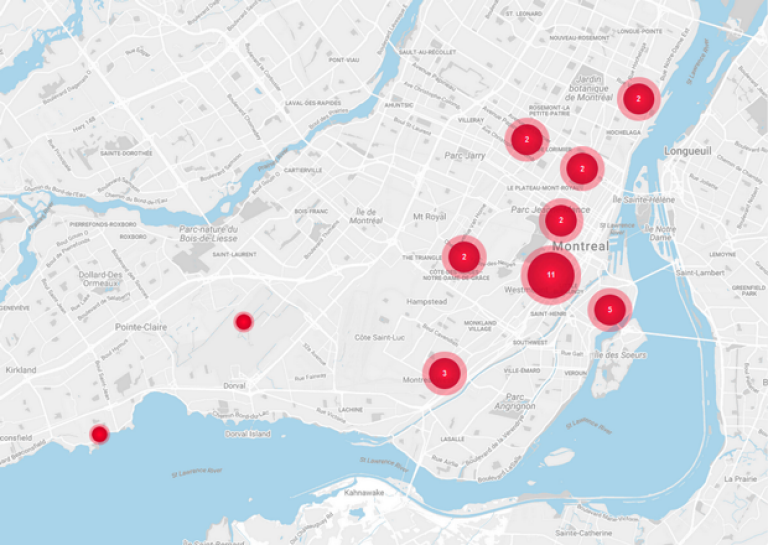Concordia students create platform to Embrace the City

A new online platform, created by Concordia’s Office of Community Engagement (OCE), will provide a searchable map of the university’s research and partnerships across Montreal.
“Our goal is to illustrate the breadth and diversity of work being done off campus,” says Charmaine Lyn, senior director of the OCE.
Our hope is that it inspires new collaborations.
The project, named “Embrace the City,” is a first solution for locating the university’s place in Montreal.
“The team heard time and time again how Concordians were already very engaged in communities and institutions,” Lyn says, describing her office’s consultations with internal stakeholders from across various faculties.
“However, we also heard that we were almost the victims of our own successes, in that the impressive volume of city and community engaged work — spread across many departments and units — makes it very hard to get a clear picture of everything that’s going on.”
A better view
One such stakeholder is Dave McKenzie, founder and coordinator of the Community Service Initiative (CSI) at the John Molson School of Business. (JMSB).
“Embrace the city is one of Concordia’s strategic directions, and it rests in part on providing experiential learning opportunities to students, researchers and faculty,” he says.
“To that end, he explains, it’s important for both the internal and external community to know what's going on.
“Most of the time, someone at JMSB wouldn't necessarily know what somebody in engineering is doing, but with this map people can look across sectional lines to get a fuller picture of Concordia’s wider community works.”
When the map project officially launches later this spring, students, staff and faculty will be able to submit their initiatives for inclusion. Lyn envisions people across disciplines connecting, as researchers find colleagues working in similar areas.
The online tool will be especially helpful for new faculty members and students who may be less familiar with the city, she says.
“If students are looking for ways to get their hands dirty and learn through real-world projects, this will be a great starting point.”
Real-world applications
McKenzie is hoping to use the map specifically to provide MBA students interested in community work concrete examples of experiential learning opportunities.
Through the CSI, students can provide in-depth consulting to community partners for credit, such as DESTA Black Youth Network and Youth Star Foundation.
“Once the map is launched this work can be highlighted so interested students can get a better idea of what community-oriented internships consist of. Or, should they want to get involved in a particular neighbourhood, they’ll be able to see what their peers have done or are doing in that specific area,” says McKenzie.
More importantly, he adds, the map will act as a window into university works for the outside community.
“Part of this initiative is to go out and develop relationships with various community organizations to identify needs that students can fill.”
The “Embrace the City” map will be up and running later this semester. For those interested in testing a beta version of the platform please contact: susan.edey@concordia.ca


